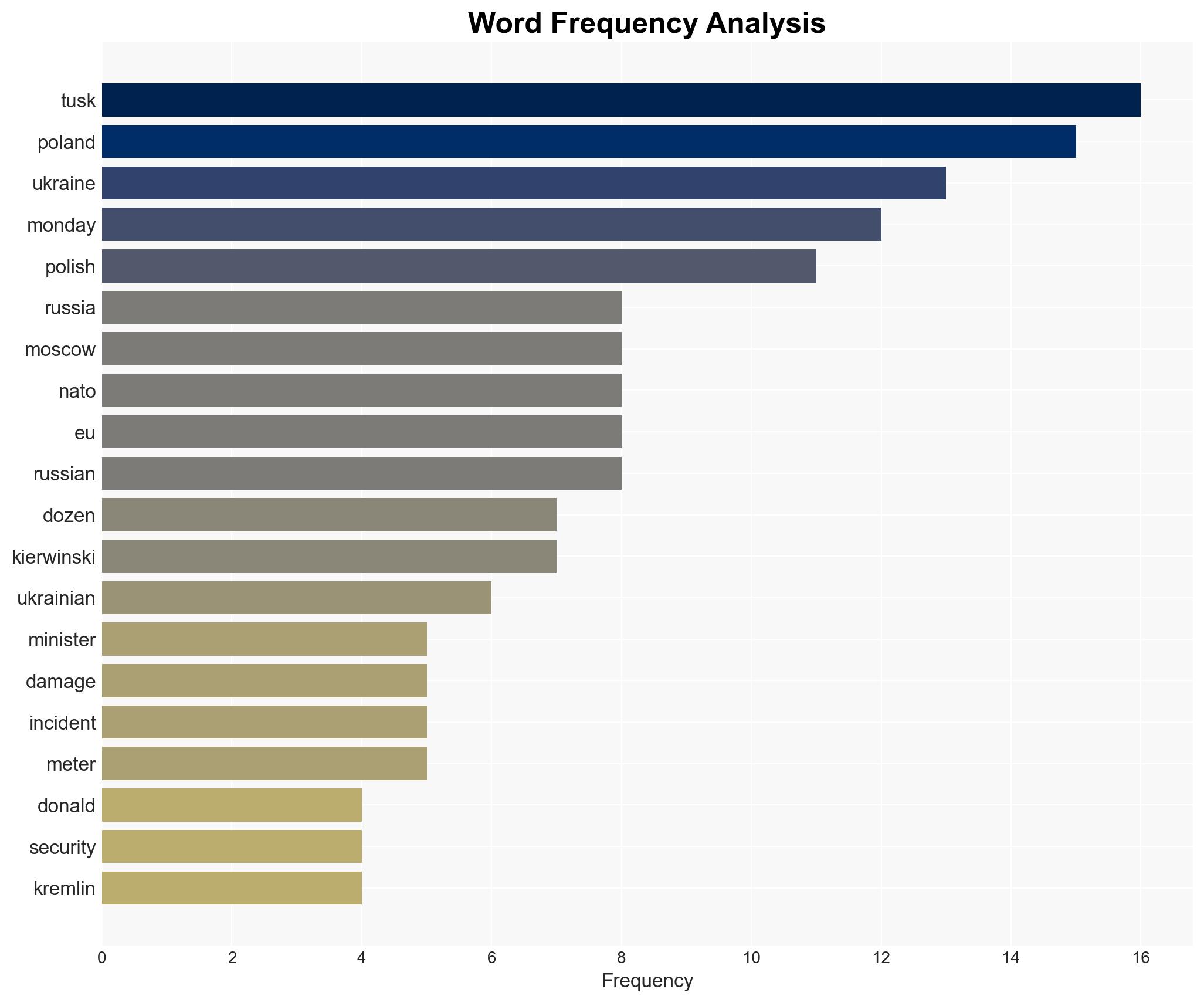Polish PM denounces sabotage of railway supply line to Ukraine – Digital Journal
Published on: 2025-11-18
AI-powered OSINT brief from verified open sources. Automated NLP signal extraction with human verification. See our Methodology and Why WorldWideWatchers.
Intelligence Report:
1. BLUF (Bottom Line Up Front)
The most supported hypothesis is that the sabotage of the Polish railway line supplying Ukraine was orchestrated by Russian operatives as part of a broader strategy to disrupt NATO and EU support for Ukraine. Confidence in this assessment is moderate due to the circumstantial nature of the evidence and the potential for alternative explanations. Recommended actions include enhancing security measures on critical infrastructure and increasing intelligence-sharing among NATO and EU members.
2. Competing Hypotheses
Hypothesis 1: The sabotage was conducted by Russian operatives to disrupt military and humanitarian aid to Ukraine, testing NATO’s response and resilience.
Hypothesis 2: The sabotage was carried out by non-state actors or internal dissidents within Poland, aiming to create political instability or leverage against the current government.
Hypothesis 1 is more likely due to historical patterns of Russian hybrid warfare tactics, including infrastructure sabotage, and the geopolitical context of the ongoing conflict in Ukraine. However, the absence of direct evidence linking Russia necessitates caution.
3. Key Assumptions and Red Flags
Assumptions: It is assumed that the sabotage required significant planning and resources, indicating involvement of a state actor. The geopolitical context suggests Russia has both motive and capability.
Red Flags: The lack of direct evidence implicating Russia, potential for confirmation bias in attributing blame, and the possibility of false-flag operations to mislead investigators.
4. Implications and Strategic Risks
The incident could escalate tensions between NATO and Russia, leading to increased military readiness and potential retaliatory actions. It may also inspire similar attacks on critical infrastructure across Europe, posing economic and security risks. Politically, it could strain EU unity if member states disagree on the response.
5. Recommendations and Outlook
- Enhance surveillance and security protocols for critical infrastructure in Poland and neighboring countries.
- Increase intelligence-sharing and joint investigations within NATO and EU to identify and mitigate threats.
- Best Scenario: The perpetrators are identified and apprehended, preventing further incidents.
- Worst Scenario: Escalation leads to broader conflict involving NATO and Russia.
- Most-likely Scenario: Continued low-level sabotage and cyber operations by state and non-state actors.
6. Key Individuals and Entities
Donald Tusk, Polish Prime Minister; Marcin Kierwinski, Polish Interior Minister; Ursula von der Leyen, EU Chief; Andriy Sybiga, Ukrainian Foreign Minister.
7. Thematic Tags
Structured Analytic Techniques Applied
- Cognitive Bias Stress Test: Expose and correct potential biases in assessments through red-teaming and structured challenge.
- Bayesian Scenario Modeling: Use probabilistic forecasting for conflict trajectories or escalation likelihood.
- Network Influence Mapping: Map relationships between state and non-state actors for impact estimation.
Explore more:
National Security Threats Briefs ·
Daily Summary ·
Support us
·





